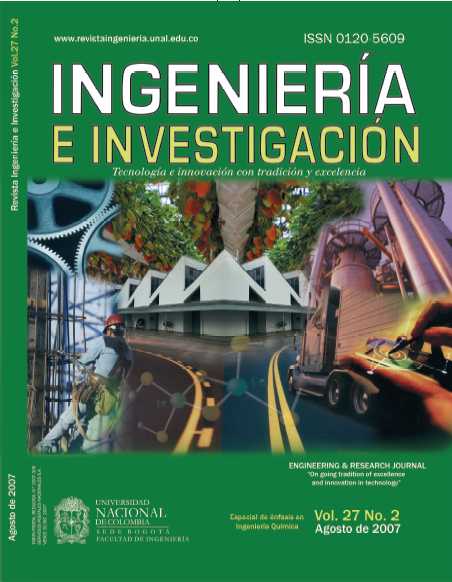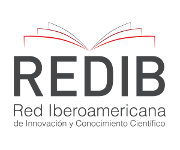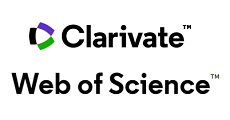Grade-two resistance screw shear connector behavior for a 28 MPa concrete section
Comportamiento de los conectores de cortante tipo tornillo de resistencia grado dos para una sección compuesta con concreto de 28 MPa
DOI:
https://doi.org/10.15446/ing.investig.v27n2.14825Keywords:
stud shear connector, compound section, screw (en)conectores de cortante, secciones compuestas, tornillo (es)
Downloads
Screw shear connectors are being more commonly used in compound concrete sections in Colombia; however, they have been designed in line with Colombian Seismic-Resistant Standards (NSR-98) rather than those established for stud shear connectors. This work represents a starting point for analysing screw shear connector behavior. 54 specimens were made for the experiment, consisting of a metallic profile and two concretes slabs where the connectors were embedded. 1/2” (12.7mm), 5/8” (15.9mm) and 3/4” (19.1mm) diameter screws were used and placed at different distances. The push-out test was used with these specimens and results were provided by using some equations for determining this type of connector’s strength in steel-concrete sections.
En Colombia el uso de los conectores de cortante tipo tornillo ha sido cada vez mayor; sin embargo, estos se han venido diseñando de acuerdo con los parámetros establecidos en las Normas Colombianas de Diseño Sismorresistente (NSR-98), requisitos establecidos para conectores tipo espigo. Este trabajo constituye un punto de partida del análisis del comportamiento de los conectores tipo tornillo en secciones compuestas. En la parte experimental se elaboraron 54 probetas compuestas por un perfil metálico y dos placas de concreto donde se encuentran embebidos los conectores. Se utilizaron tornillos con diámetros de 1/2” (12,7 mm), 5/8” (15,9 mm) y 3/4” (19,1 mm), colocados a diferentes separaciones, estas probetas fueron ensayadas a corte directo, y con los datos obtenidos se proponen las ecuaciones para la determinación de la resistencia de este tipo de conectores en secciones compuestas acero-concreto.
References
AISC., Asociación Colombiana de Ingeniería Sísmica, Normas Colombianas de Diseño y Construcción Sismo Resistente, Colombia, AISC, 2000.
Allan, B., Yen, B. T., Slutter, R. G., and Fisher, J. W., Comparative Tests on Composite Beams with Formed Metal Deck., Fritz Engineering Laboratory, Report No. 200.76.458.1, Bethlehem, PA., Lehigh University, 1976.
Caro, J. y Muñoz, D., Comportamiento a flexión del sistema conformado por un perfil MM y una losa aligerada compuesta por concreto, perfil omega y bloque de arcilla., Tesis presentada a la Universidad Nacional de Colombia, para optar por al grado de Ingeniero Civil, 2003.
Chinn, J., Pushout Tests on Lightweight Composite Slabs., Engineering Journal, AISC, Vol. 4, 1965, pp. 129-134.
Davies, C., Small-Scale Push-Out Tests on Welded Stud Shear Connectors., Journal Concrete, Sept. 1967, pp. 311-316.
Goble, G. G., Shear Strength of Thin Flange Composite Specimens., Engineering Journal, Vol. 5, 1968, pp. 62-65.
Ollgaard, J. G., Slutter, R. G., and Fisher, J. W., Shear Strength of Stud Connectors inLightweight and Normal-Weight Concrete., Engineering Journal, AISC, Vol. 8, 1971, pp. 55-64.
Slutter, R. G. and Driscoll, G. C., Research on Composite Design at Lehigh University Proceedings., National Engineering Conference, AISC, May, 1961
Slutter, R. G., and Driscoll, G. C., Flexural Strength of Steel-Concrete Composite Beams., Journal Structural, Div., Vol. 2, 1965, pp. 71-99. DOI: https://doi.org/10.1061/JSDEAG.0001257
Viest, I. M., Test of Stud Shear Connectors Parts I, II, III y IV., Test Data, Nelson Stud Welding, Lorain, Ohio, 1956.
How to Cite
APA
ACM
ACS
ABNT
Chicago
Harvard
IEEE
MLA
Turabian
Vancouver
Download Citation
License
Copyright (c) 2007 Sherley Larrañaga Rubio, Maritzabel Molina Herrera

This work is licensed under a Creative Commons Attribution 4.0 International License.
The authors or holders of the copyright for each article hereby confer exclusive, limited and free authorization on the Universidad Nacional de Colombia's journal Ingeniería e Investigación concerning the aforementioned article which, once it has been evaluated and approved, will be submitted for publication, in line with the following items:
1. The version which has been corrected according to the evaluators' suggestions will be remitted and it will be made clear whether the aforementioned article is an unedited document regarding which the rights to be authorized are held and total responsibility will be assumed by the authors for the content of the work being submitted to Ingeniería e Investigación, the Universidad Nacional de Colombia and third-parties;
2. The authorization conferred on the journal will come into force from the date on which it is included in the respective volume and issue of Ingeniería e Investigación in the Open Journal Systems and on the journal's main page (https://revistas.unal.edu.co/index.php/ingeinv), as well as in different databases and indices in which the publication is indexed;
3. The authors authorize the Universidad Nacional de Colombia's journal Ingeniería e Investigación to publish the document in whatever required format (printed, digital, electronic or whatsoever known or yet to be discovered form) and authorize Ingeniería e Investigación to include the work in any indices and/or search engines deemed necessary for promoting its diffusion;
4. The authors accept that such authorization is given free of charge and they, therefore, waive any right to receive remuneration from the publication, distribution, public communication and any use whatsoever referred to in the terms of this authorization.



























